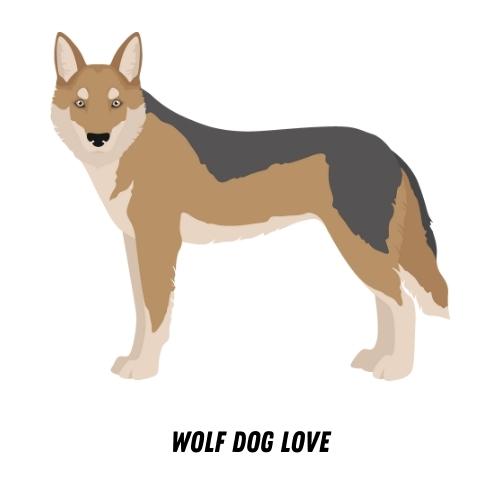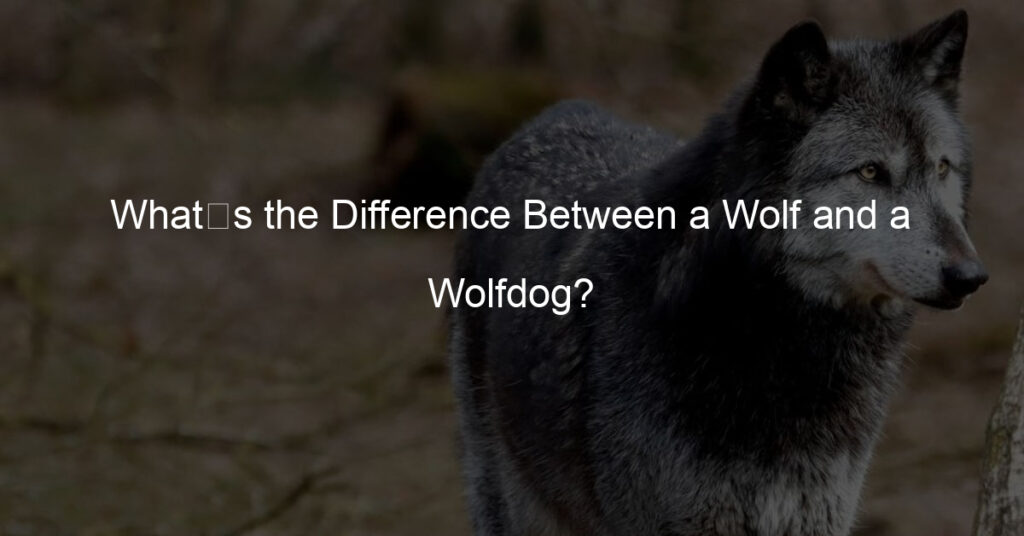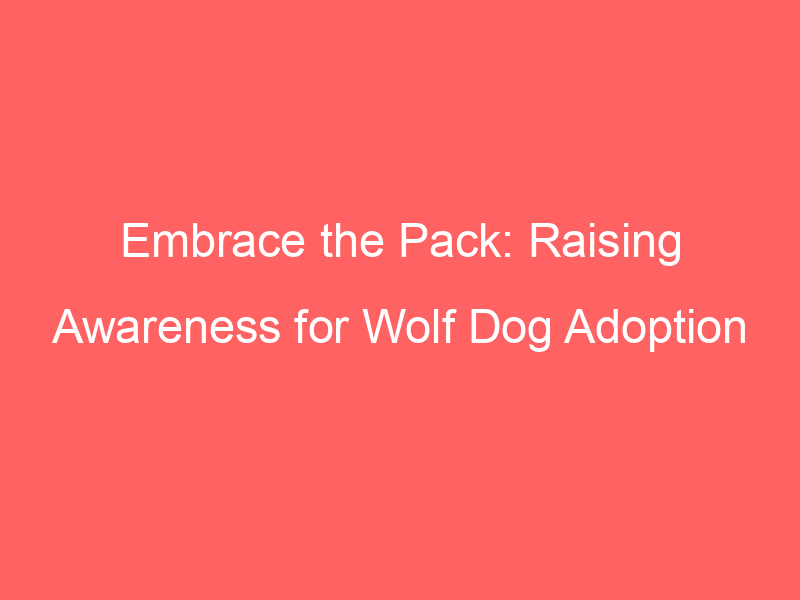Wolfdogs are not just fancy house pets; these furry felines serve an important role in the ecosystems of their home range and beyond. As apex predators, wolves have a significant impact on the health and balance of many different ecosystems. Wolfdogs are a result of artificial selection by humans. In doing so, they have become quite unique from other wild canids like coyotes, foxes, or even Dingos. While there are many ways to identify a wolfdog (especially when you live with them all day), let’s take a look at what makes this domesticated subspecies different from its wild parent.
How Can I Tell if My Dog Is a Wolfdog?
To identify your wolfdog by sight, you’ll want to look out for unique physical traits. The most obvious one is the presence of a tail, which is present in all wolfdogs. Another trait that will stand out to you is their fur color. Wolfdogs come in many different colors and patterns, but they are typically either gray or blue-gray. Their fur can also feature a white stripe on their back, which is called the “snow leopard” pattern. Another distinctive trait of these dogs is the fact that they often have upright ears with rounded tips.
Another way to identify if your dog is a wolfdog is through their behavior and temperament. They are usually more shy than other domestic canines and may act as if they are hungry even when full: hence their name-wolfdogs! They have an affinity for water; this may be due to their wild parent’s natural hunting habits or because humans have done well by providing them with access to swimming pools and lakes in which they can swim around freely without having to worry about predators lurking nearby. They also often get along well with other animals like cats, ferrets, birds, foxes, raccoons, skunks, opossums and squirrels-all animals who might compete with them for food in the wild!
Can Wolves Mate With Dogs?
The answer is no. Wolves are pack animals, and they only mate with other wolves. This lack of genetic diversity has led to a variety of health issues in both the wolfdog and wolf populations.
Wolfdogs can be very difficult to identify. For example, a dog’s coat color isn’t always that big of a giveaway; it could be any shade of brown or black, depending on how much white the dog inherits from its parents. A wolfdog can have certain features that help distinguish it from its wild parent, but this is not always reliable!
A major distinguishing characteristic of a wolfdog is their size. Depending on the species, these dogs can grow up to be twice as large as their wild counterparts (some specimens have even been known to weigh upwards of 200 lbs).
What Two Breeds Make a Wolf Dog?
Before we get into the specifics of what makes a wolfdog, it is important to understand that there are two breeds that make up this domesticated subspecies: the gray wolf and the domestic dog. The gray wolf is one of 14 subspecies of the Canis lupus, which is found in North America, Eurasia and Africa. The term Wolfdog comes from combining the words Wolves and Dogs. These two breeds are very similar in terms of morphology but can be distinguished by their behavior.
The most distinctive feature of a wolfdog is its snout; unlike other wild canids, they have a short muzzle with rounded tip as well as a long nose.
Another distinguishing feature is their coat color: While wolves are usually brown or black and tan, their coat color can range from cream to light blond to white with dark spots.
The behavior between these two breeds also differs greatly: A wolfdog usually has high prey drive and will chase any animal that runs away from them, whereas a domestic dog will typically retreat when faced with danger.
What Dog Breed Has the Most Wolf-Like DNA?
A wolfdog is a crossbreed of a domestic dog and a gray wolf. This mixed heritage means that the species has been able to adapt to the changing ecosystems in which they live. While some wolves are highly aggressive, others are much more docile. Which type do you think is typically bred?
The domestic dog is not an apex predator like its wild parent, so there’s no reason for it to be particularly aggressive. Consequently, many of the aggressive characteristics tend to fade away when breeding this subspecies back into the wild canid population. However, as with any domesticated animal, there are still health concerns that need to be addressed before breeding them back into the wild canid population.








